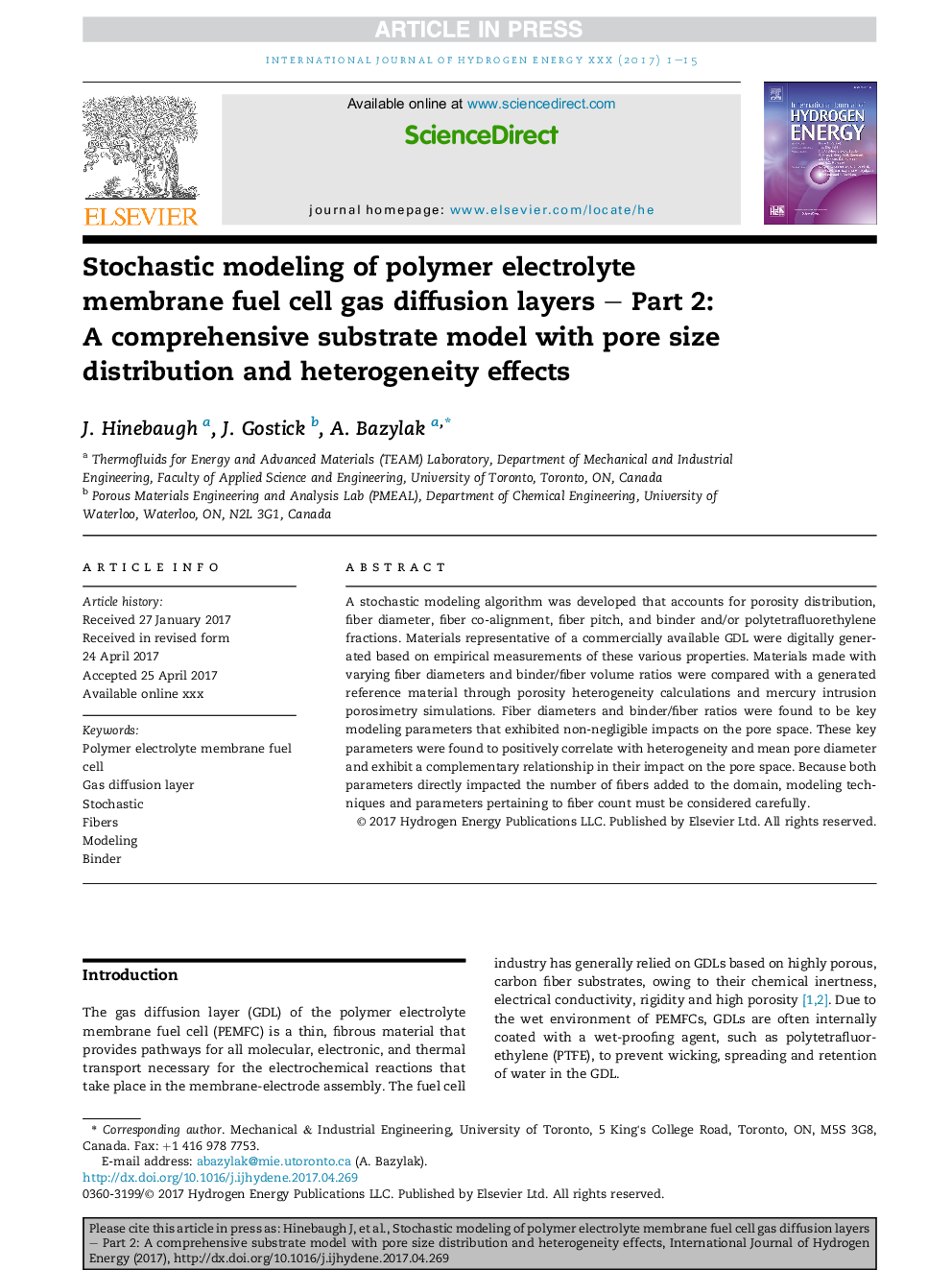| Article ID | Journal | Published Year | Pages | File Type |
|---|---|---|---|---|
| 5146472 | International Journal of Hydrogen Energy | 2017 | 15 Pages |
Abstract
A stochastic modeling algorithm was developed that accounts for porosity distribution, fiber diameter, fiber co-alignment, fiber pitch, and binder and/or polytetrafluorethylene fractions. Materials representative of a commercially available GDL were digitally generated based on empirical measurements of these various properties. Materials made with varying fiber diameters and binder/fiber volume ratios were compared with a generated reference material through porosity heterogeneity calculations and mercury intrusion porosimetry simulations. Fiber diameters and binder/fiber ratios were found to be key modeling parameters that exhibited non-negligible impacts on the pore space. These key parameters were found to positively correlate with heterogeneity and mean pore diameter and exhibit a complementary relationship in their impact on the pore space. Because both parameters directly impacted the number of fibers added to the domain, modeling techniques and parameters pertaining to fiber count must be considered carefully.
Related Topics
Physical Sciences and Engineering
Chemistry
Electrochemistry
Authors
J. Hinebaugh, J. Gostick, A. Bazylak,
